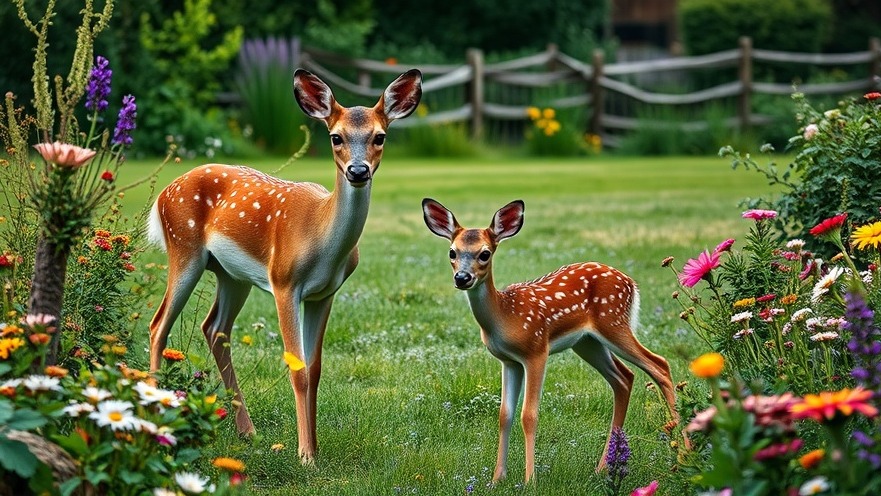
Nature's Guests: An Unexpected Encounter
While inspecting my mailbox last week, I was pleasantly surprised to encounter a pair of twin fawns frolicking across my neighbor’s sedge lawn, their delicate legs wobbling with youthful exuberance. Nearby, their mother was enjoying a healthy snack of bamboo muhly, showing off her resourcefulness in choosing nutritious landscaping—after all, our gardens are bursting with various plant species that can serve both us and the local wildlife.
Wildlife in Our Gardens: A Double-Edged Sword
However, as enchanting as it is to witness such wildlife up close, it’s essential for eco-conscious homeowners to consider the balance between inviting nature into our lives and protecting our gardens. Fawns may seem innocent, but deer can quickly turn into oversized rodents that view gardens as their personal buffet. As some local gardeners have lamented, hostas and other beloved plants often become the unfortunate victims of these charming eaters, leading to a tug-of-war between aesthetics and conservation.
Enhancing Landscapes for Both Humans and Wildlife
As we design our outdoor spaces, incorporating sustainable home design principles can enrich our experience while benefiting local fauna. By utilizing native, resistant plants in our landscaping, we not only create a vibrant habitat for pollinators and small creatures but also reduce water usage and pesticide needs. An eco-friendly gardening approach encourages diversity in our gardens while minimizing the ecological footprint of our homes.
Taking Action: How You Can Help
For those looking to maintain a beautiful garden while supporting local ecosystems, consider applying zero-waste practices. Composting organic waste contributes to rich, nutrient-dense soil, reducing the need for chemical fertilizers. Moreover, embracing water conservation techniques, such as rainwater harvesting or drip irrigation, ensures that our plants—whether intentional or wild—thrive without overwhelming our resources.
As we continue to connect with nature, let’s prioritize eco-friendly gardening that respects both our environment and the wildlife that calls it home. If you’d like to learn more about sustainable practices that promote both beautiful and responsible landscaping, I encourage you to seek out resources that dive deeper into these practices.
 Add Row
Add Row  Add
Add 




Write A Comment